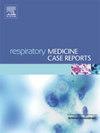Molecular genetic profiling of a rare case of primary pulmonary adenoid cystic carcinoma: Insights from whole exome sequencing and literature review
IF 0.8
Q4 RESPIRATORY SYSTEM
引用次数: 0
Abstract
Background
Primary pulmonary adenoid cystic carcinoma (PPACC) is a rare neoplasm characterized by slow growth and low malignancy.
Aim
The study seeks to enhance understanding of PPACC through comprehensive analysis of a reported case, incorporating pathological diagnosis, immunohistochemistry, special staining, and molecular alterations identified via whole exome sequencing.
Methods
A retrospective analysis was conducted on a PPACC case treated at the institution, encompassing pathological examination, immunohistochemical profiling, special staining techniques, and molecular alterations revealed by whole exome sequencing.
Results
A 56-year-old male presented with a left lower lobe mass identified on chest CT during a routine health check. Clinical evaluation revealed dyspnea, and imaging showed a 25 × 18 mm nodule in the left lower lobe. Video-assisted thoracoscopic surgery was performed for left lower lobectomy, with intraoperative frozen pathology indicating a salivary gland-type tumor (2.5 × 2 × 1.7 cm). ENT examination and cervical MRI ruled out a primary salivary gland tumor. Routine paraffin-embedded pathology confirmed pulmonary adenoid cystic carcinoma without pleural invasion. Whole exome sequencing revealed mutations in MYB family genes and the ALK gene.
Conclusion
This study highlights the pathological and molecular characteristics of PPACC, including a cribriform pattern and specific genetic mutations. These findings underscore the necessity of enhancing clinical vigilance to avoid misdiagnosis and missed diagnosis of this disease.
求助全文
约1分钟内获得全文
求助全文
来源期刊

Respiratory Medicine Case Reports
RESPIRATORY SYSTEM-
CiteScore
2.10
自引率
0.00%
发文量
213
审稿时长
87 days
 求助内容:
求助内容: 应助结果提醒方式:
应助结果提醒方式:


